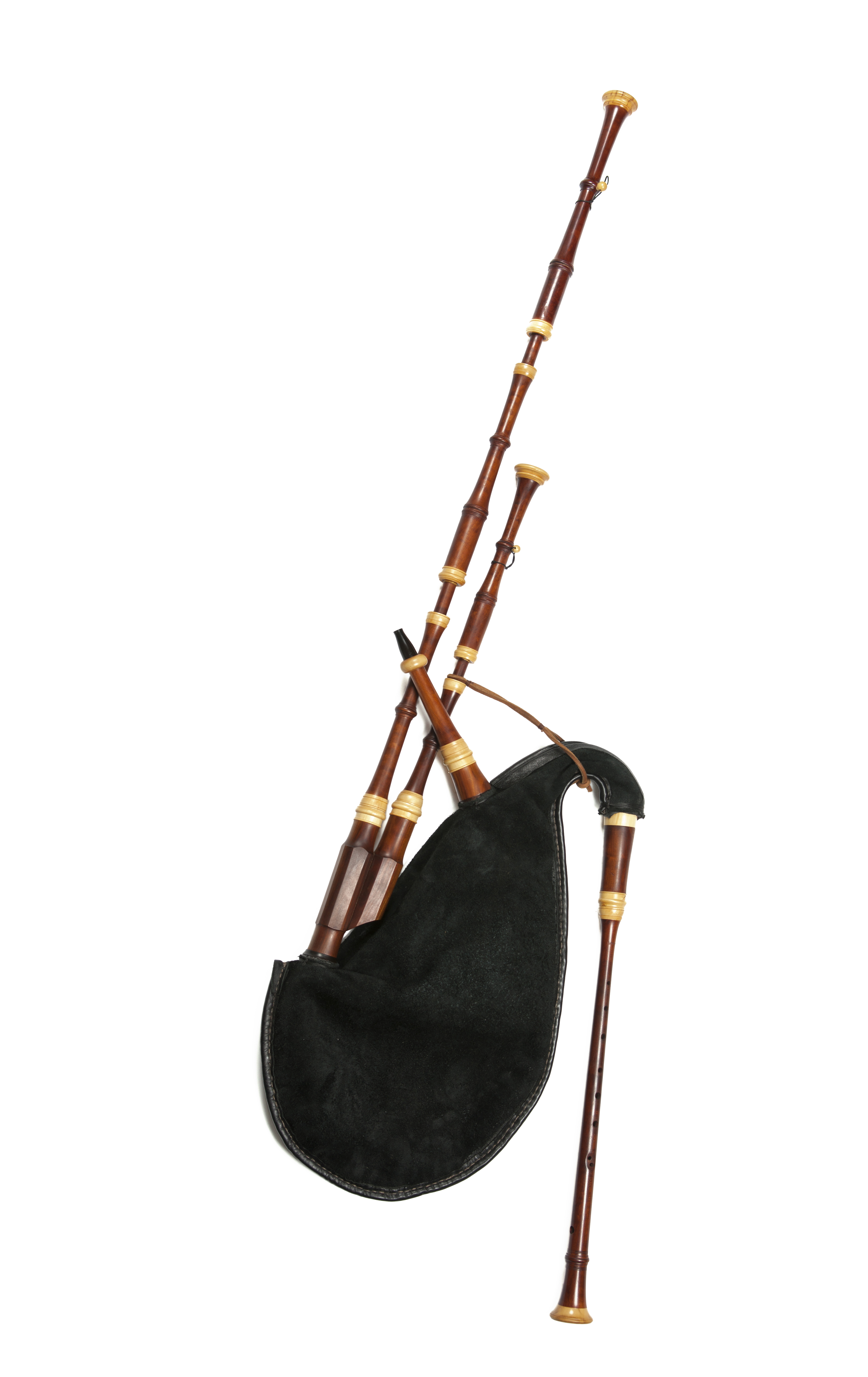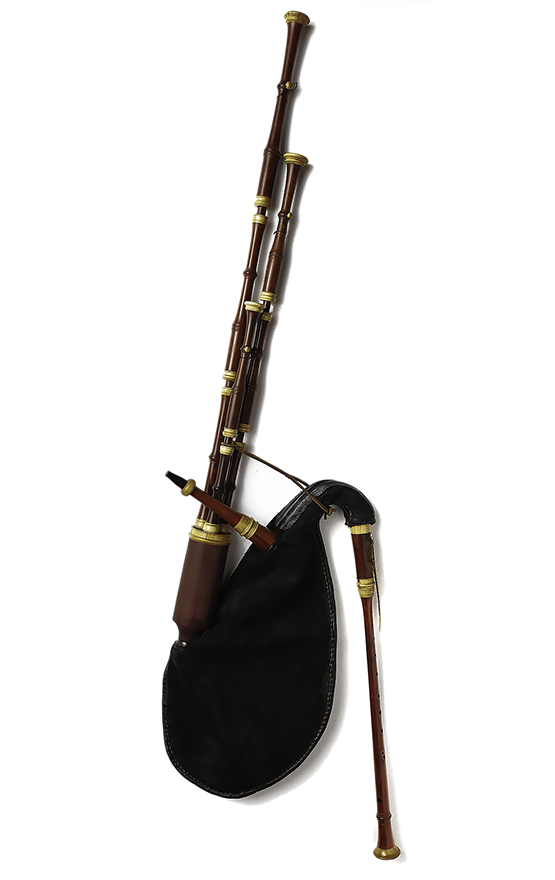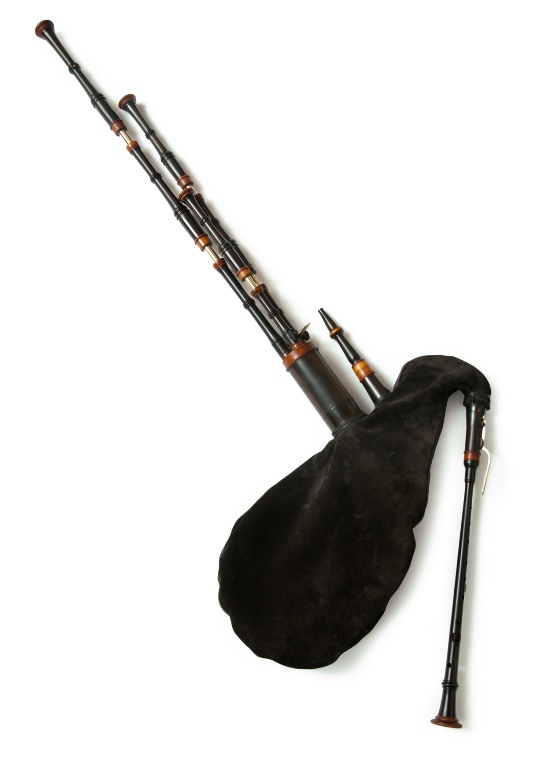
Anistratov Schäferpfeife
Anistratov Schäferpfeife is the instrument that was developed by Alexander with a deep comprehension and immersion of the Middle Ages, Renaissance and Baroque.
History of this bagpipes dates back hundreds of years and absorbs the musical characteristics of Central and North West Europe.
This type of bagpipes Alexander has created with the consideration of requests, both modern Authentic music players and musicians playing modern music, folk & jazz. As result of the meticulous study of existing examples and originals, two different designs were developed for this type of bagpipes, namely “Fafnir” and “Tofsvipa”. The main material for Schäferpfeife is Plum or Cherry wood but also other types of timber such as Blackwood or Cocobolo are also available by the request. European Maple is usually using for the beginners sets.
Chanters
The most popular pitch for this bagpipes is G.
|
Drones

Each Anistratov Schäferpfeife may be configured with one, two, or three drones — tailored precisely to the musical and aesthetic preferences of the player. The following arrangements are available:
- Single bass drone
- Two drones: bass with baritone or bass with tenor
- Three drones: bass, baritone, and tenor
Two distinct mounting styles are offered for the drones, each rooted in historical iconography and performance tradition. The Flemish style, inspired by the paintings of Pieter Bruegel and other Low Countries masters, features drones positioned upward and forward — a visually striking configuration evoking the rich cultural imagery of the Renaissance. In contrast, the Medieval style places the drones in a more familiar position, resting slightly rearward on the player’s shoulder, in line with Continental and British traditions.
Each drone is equipped with a precision shutoff valve, allowing the player to engage or silence individual drones at will. This offers exceptional flexibility — whether one prefers the full harmonic resonance of all three drones or the more intimate blend of a single or paired configuration.
For tonal versatility, every drone can be retuned a full tone higher by means of a tuning ring or a specially designed venting plug. This mechanism allows the instrument to adapt seamlessly between major and minor modes, offering greater expressive depth without the need to switch pipes.
All Schäferpfeife drones come fitted with traditional quill-type cane reeds, hand-voiced for stability and warmth. For those seeking durability or environmental resilience, high-precision synthetic composite reeds are also available.
Every drone configuration is conceived not merely for function, but as part of a larger musical architecture — supporting the chanter’s voice with clarity, colour, and character.

Keys
The addition of metal keys to the Schäferpfeife chanter is not a mere convenience, but an invitation — an invitation to explore a broader, more nuanced musical language within the voice of the instrument.
Each chanter may be fitted with between one and five handcrafted metal keys, depending on the musical needs of the player. These keys extend the chromatic and harmonic capabilities of the instrument, providing access to accidentals and auxiliary notes without compromising the integrity of traditional fingering. Among the most commonly requested are keys for the minor third, minor sixth, major seventh, and augmented fourth, though further configurations are available by consultation.
These keys are made from high-quality brass or nickel silver, fitted with care and voiced individually to blend seamlessly with the natural acoustic properties of the chanter. Their low-profile design ensures comfort and precision under the fingers, whether playing from the bench or on stage.
In addition to melodic keys, a discreet chanter shutoff key may be installed — allowing the player to silence the chanter entirely with a swift, smooth action. This mechanism, often visible in instrument photographs, enables clean starts, dramatic pauses, and moments of pure drone resonance in ensemble or solo performance.
For further control, an optional main stock drone shutoff valve can be installed within the drone stock itself. This feature permits the player to interrupt airflow to all drones at once — allowing for quiet tuning, piece transitions, or performance techniques requiring a momentary silence of the drone bed.
These mechanical refinements are implemented not for their novelty, but in service of musical expression. Every key, every valve is designed to offer the discerning player greater freedom, precision, and grace — while preserving the visual and acoustic elegance of the instrument.

Reeds
Nowhere is this dedication more evident than in our hand-voiced drone reeds. Each is fashioned in-house, beginning with cane meticulously harvested and graded by Alexander Anistratov himself in the northern Italian countryside. Only the most acoustically resonant stalks — prized for their density, fibre integrity, and tonal promise — are selected. Once seasoned and shaped, they are tied by hand using enduring methods, yielding reeds of remarkable stability and tonal richness — steeped in the spirit of the old masters.
For the discerning performer requiring steadfast reliability across climates and settings, we present our composite reeds: crafted with hand-turned African Blackwood bodies and fitted with natural cane tongues — marrying the warmth of tradition with the assurance of modern performance.
And for those who favour precision and resilience without compromise, our advanced drone reeds feature acrylic (ebonite) bodies paired with expertly profiled carbon fibre tongues — engineered for clarity, consistency, and a voice as commanding as it is refined.
Anistratov Shaefferpfeife reeds: where legacy meets innovation, and each note speaks with authority.

Tofsvipa design. Plum wood, Ferrules: boxwood, Mounts and bushings: boxwood
Flemish style drones instaling, bass & tenor

Tofsvipa design. Plum wood, Ferrules: boxwood, Mounts and bushings: boxwood
Flemish style drones instaling, bass & baritone

Tofsvipa design. Plum wood, Ferrules: boxwood, Mounts and bushings: boxwood, chanter stop key: bronze Flemish style drones instaling, bass, baritone & tenor.

Fafnir design. Blackwood, Ferrules: stained boxwood, Mounts and bushings: stained boxwood
Mideival style drones instaling, bass, baritone & tenor
Video